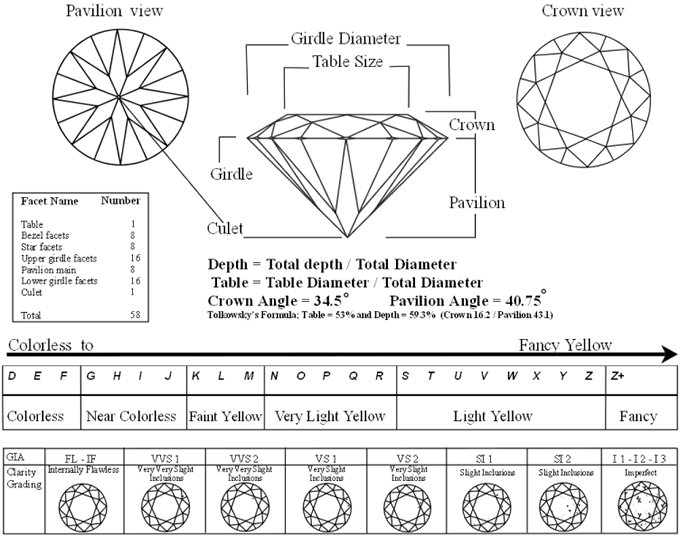Recently, I gave you the basic rundown on what diamond certification is, and why it is important for you as a consumer. This week, I’m going to explain why diamond certification is so important to me as both a jeweler and as an ethical businessman.
I’ve been selling diamonds for a very long time and making jewelry for even longer. I’m a big fan of diamond certification because it helps keep multiple major aspects of this industry honest. Jewelry and gemstone sales have a dubious history of taking advantage of the unwary consumer; it’s human nature to deviate in that direction, and those two facts coalesce to make it supremely difficult to gain the trust of those who support my industry as a whole. If you, the public, can’t trust this industry, this industry will cease to exist. It’s simple math: no customers means no sales, which means me living in a cardboard box under a bridge. I don’t want to live in a cardboard box under a bridge, so I’ve made it my business to ethically represent what I sell and educate my customer base to the greatest extent possible.
But even that is not as simple as it once was.
There are several gemological laboratories in the United States, and many, many more around the world. Some are nonprofit, like GIA and AGS, and have no other stake in diamond grading than to uphold the reputations of the industry and their respective labs. Others are for-profit organizations that have to turn a buck on the sale of their certifications, and they are all competing against one another to get their certifications out into the world.
In the last decade, some of these labs, quite frankly, have made a mockery of the International Diamond Grading System, and their reports have little value to me. It seems as though they have taken advantage of the subjective nature of grading the color and clarity of diamonds. Here are two of my most recent examples from 2013.
The first involved two diamonds graded by the same lab, which was not GIA or AGS. The diamonds had grading reports of E/SI₁ and F/SI₂, respectively. While the F/SI₂ wasn’t graded very strictly, it was close to within its stated range. But the E/SI₁ was more like I/SI₁.
Diamond color is graded using the English alphabet from D to Z: D being the highest and Z being the lowest. I don’t usually get such blatant examples of discrepancy side by side like this; I usually have to compare a single stone to my GIA-certified set of color-grading master stones. But there they were: a certified “E-color” that was noticeably yellower than a certified “F-color,” graded by the same lab.
The second: I received a diamond into my store with a diamond grading report from a different lab than the first example. Its certificate declared it to be a G/VS₂. My gemologist graded it as a K/SI₂. Not only was that two clarity grades lower, almost to the point of having eye-visible inclusions; it was five – count’em (G-H-I-J-K) – color grades lower than this lab certified it to be.
One of the problems these poorly graded stones represent is the potential for fraud. The finer a diamond is graded, the more expensive it is. Stones graded by some of these labs generally tend to be less expensive than their certified grades would suggest. They’re usually priced about the same as their proper grade would be. But not all jewelers are on the level, and a diamond with official certification saying it is finer than it is opens the door wide for overselling and fake “deals of the day,” fueling the public trust issue with the ethics of the industry.
In a couple of days, I’ll go over what I’m doing in my store to combat this epidemic of incompetence and fallacy, and hopefully convince you that not all jewelry stores are owned and operated by swindling little weasels.

Diamond Grading Reference Chart
Tags: AGS, bridge, clarity, diamonds, GIA, jewelry stores, United States